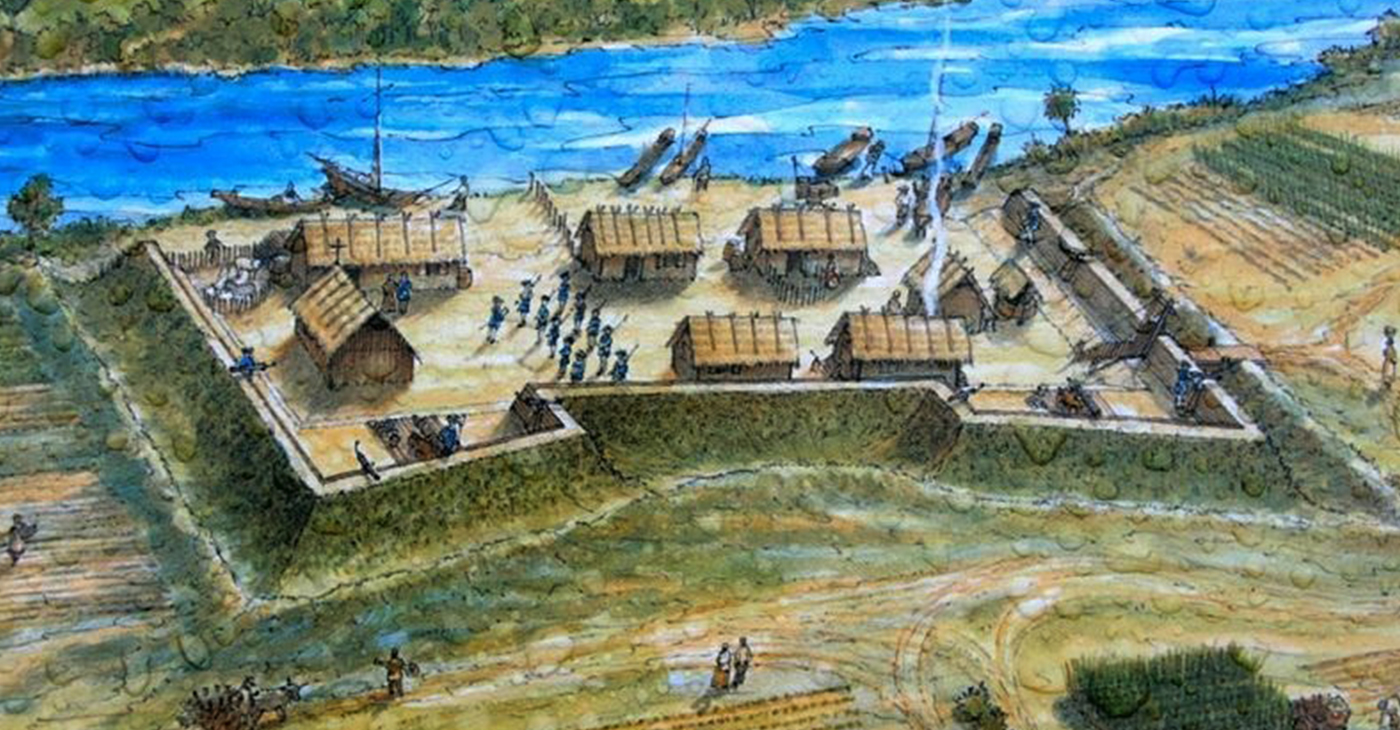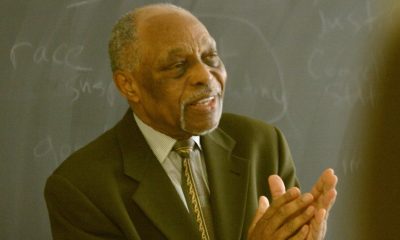Black History
Fort Mose: The First Free Black Settlement
Fort Mose was the first free Black settlement in what is now the United States, and the only one known to have been sponsored by a European colonial government. Two Fort Mose sites eventually existed: one occupied by the Spanish (1737–1740) and the other by Blacks (1752–1763). Although living there was peaceful, the settlement was not immune to violent opposition.

By Tamara Shiloh
During the 18th century, Florida had become a haven for colonial South Carolina’s fugitive slaves. This was a result of the competition between Spain and Britain. Spain held a flexible attitude toward slaves and Black freedmen and thus encouraged British-owned slaves to escape to Florida. Such a move would inevitably destabilize British colonization in the north.
Runaway slaves crossed swamps and forestlands on foot. Help provided by Native Americans along the way created the first Underground Railroad. Parts of the journey were treacherous, and many did not survive. Those who reached St. Augustine, Fla., were granted asylum by the Spanish government: freedom in exchange for converting to Catholicism. Male slaves served a term of military service.
The first group seeking these freedoms arrived in 1687: eight men, two women, and a three-year-old child. By 1738, the numbers increased to more than 100. That’s when the fortified town of Gracia Real de Santa Teresa de Mose (Fort Mose) was constructed on St. Augustine’s northernmost border. (A fortified town is one with strong defenses, usually a massive wall structure and inner citadels or strongholds.)
Fort Mose was the first free Black settlement in what is now the United States, and the only one known to have been sponsored by a European colonial government. Two Fort Mose sites eventually existed: one occupied by the Spanish (1737–1740) and the other by Blacks (1752–1763). Although living there was peaceful, the settlement was not immune to violent opposition.
A war broke out between England and Spain (The War of Jenkins’ Ear: 1740–1750). Citizens of St. Augustine and Fort Mose had suddenly found themselves involved in a conflict spanning three continents. This action of war was The Battle of Fort Mose (then dubbed Bloody Mose or Bloody Moosa).
The English employed thousands of soldiers and dozens of ships to destroy St. Augustine. All runaway slaves were to be returned to their former owners. A blockade was set up and the city was bombarded for 27 consecutive days. Those protecting St. Augustine and Fort Mose were hopelessly outnumbered. But that did not stop a group of Blacks, whites, and Native Americans from pulling together and fighting back.
Capt. Francisco Menéndez, a formerly enslaved African, led Fort Mose’s free Black militia in protecting St. Augustine. They lost the fort briefly but were able to recapture it, holding back English forces. In 1763, Spain ceded all of La Florida to England (Treaty of Paris). The citizens of Fort Mose once again faced enslavement. To maintain their freedom, they abandoned the fort for safety in Havana, Cuba, then a colony of Spain.
Fort Mose was demolished by the British during the War of 1812. As the years passed, the land was swallowed by marsh; the important legacy of its community was forgotten.
But later in the 20th century, a team of archaeologists, historians, government leaders, and citizens restored Fort Mose to its rightful place of honor.
Today, the location of the fort occupied by Blacks is recognized as a significant local, national, and international historic landmark.
Activism
Oakland Post: Week of April 24 – 30, 2024
The printed Weekly Edition of the Oakland Post: Week of April 24 – 30, 2024

To enlarge your view of this issue, use the slider, magnifying glass icon or full page icon in the lower right corner of the browser window. ![]()
Activism
Oakland Post: Week of April 17 – 23, 2024
The printed Weekly Edition of the Oakland Post: Week of April 17 – 23, 2024

To enlarge your view of this issue, use the slider, magnifying glass icon or full page icon in the lower right corner of the browser window. ![]()
Black History
Matthew Henson: Explorer Extraordinaire
Matthew Henson, a trailblazing explorer who overcame countless obstacles to leave an incredible mark on history. Born on August 8, 1866, in Charles County, Maryland, his journey is a testament to the power of determination and the spirit of adventure.

By Tamara Shiloh
Matthew Henson, a trailblazing explorer who overcame countless obstacles to leave an incredible mark on history. Born on August 8, 1866, in Charles County, Maryland, his journey is a testament to the power of determination and the spirit of adventure.
Henson’s life began amidst the backdrop of post-Civil War America, where opportunities for African Americans were scarce. From a young age, he possessed an insatiable curiosity about the world beyond his small town. At the age of 12, he embarked on a journey that would change the course of his life forever when he joined a merchant ship as a cabin boy.
His most famous expedition was his journey to the Arctic with renowned explorer Robert E. Peary. In 1887, Henson joined Peary’s crew as a seaman and quickly proved himself to be invaluable with his skills as a navigator and craftsman. Over the course of several expeditions, Matthew endured extreme cold, treacherous terrain, and grueling conditions as he and Peary sought to reach the elusive North Pole.
In 1908–09, Peary set out on his eighth attempt to reach the North Pole. It was a big expedition, with Peary planning to leave supplies along the way. When he and Henson boarded their ship, the Roosevelt, leaving Greenland on August 18, 1909, they were joined by a large group. This included 22 Inuit men, 17 Inuit women, 10 children, 246 dogs, 70 tons of whale meat, blubber from 50 walruses, hunting gear, and tons of coal.
In February, Henson and Peary left their anchored ship at Ellesmere Island’s Cape Sheridan, along with the Inuit men and 130 dogs. They worked together to set up a trail and supplies along the way to the Pole.
Peary picked Henson and four Inuit people to join him in the final push to the Pole. However, before they reached their destination, Peary couldn’t walk anymore and had to ride in a dog sled. He sent Henson ahead to scout the way. In a later interview with a newspaper, Henson recalled being in the lead and realizing they had gone too far. The group turned back, and Henson noticed his footprints helped guide them to their destination. At that location, Henson planted the American flag.
Henson’s legacy extends far beyond his expeditions to the Arctic. He shattered racial barriers in the world of exploration and inspired countless individuals, regardless of race, to dream big and pursue their passions. In 1937, he was finally recognized for his achievements when he was inducted into The Explorers Club, an organization dedicated to promoting scientific exploration and field research.
Matthew Henson died in the Bronx, New York, on March 9, 1955, at the age of 88.
-

 Community2 weeks ago
Community2 weeks agoFinancial Assistance Bill for Descendants of Enslaved Persons to Help Them Purchase, Own, or Maintain a Home
-

 Activism4 weeks ago
Activism4 weeks agoOakland Post: Week of April 3 – 6, 2024
-

 Business2 weeks ago
Business2 weeks agoV.P. Kamala Harris: Americans With Criminal Records Will Soon Be Eligible for SBA Loans
-

 Community2 weeks ago
Community2 weeks agoAG Bonta Says Oakland School Leaders Should Comply with State Laws to Avoid ‘Disparate Harm’ When Closing or Merging Schools
-

 Activism3 weeks ago
Activism3 weeks agoOakland Post: Week of April 10 – 16, 2024
-

 Community2 weeks ago
Community2 weeks agoOakland WNBA Player to be Inducted Into Hall of Fame
-

 Community2 weeks ago
Community2 weeks agoRichmond Nonprofit Helps Ex-Felons Get Back on Their Feet
-

 Community2 weeks ago
Community2 weeks agoRPAL to Rename Technology Center for Retired Police Captain Arthur Lee Johnson






















































